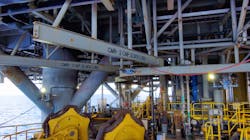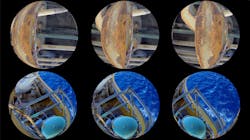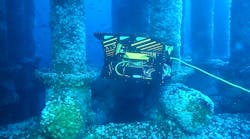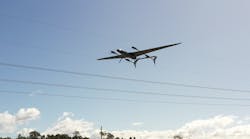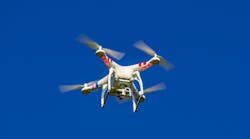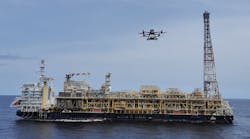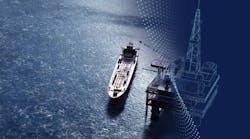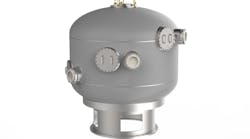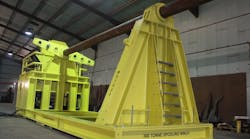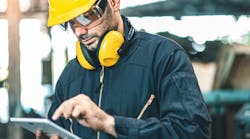Editor's note: This story first appeared in the May-June 2023 issue of Offshore magazine as part of the Remote Inspections & Operations Special Report.
By Sterling Hays, Skydio
The oil and gas industry is under pressure to deliver value in a turbulent economic environment while also prioritizing environment, sustainability and governance (ESG). Digital strategies can provide distinct advantages in these areas, and for years, energy executives have expected drones to play a significant role in operations.
Progress has been seen, but mass adoption of drone technology for offshore platform inspections hasn’t happened yet. Artificial intelligence (AI) is rapidly changing the paradigm with reduced costs, increased efficiency and improved safety. Skydio, the largest US drone manufacturer, is partnering with Shell and contractor CAN USA to de-risk, demonstrate and progress the inspection capabilities available for offshore operations.
Empowering human operators
One of the most significant barriers to adoption has been the lack of accessibility. Traditional drones are not efficient or simply cannot operate in offshore environments because they require expert pilots to manually fly with limited space and visibility while grappling with unpredictable weather conditions. However, AI-powered autonomous drones are easy to operate and hard to crash. Using advanced computer vision to automatically navigate complex environments, effortlessly avoid obstacles and adapt to changing environments in real time, existing workforces can fly them with just a few hours of training. New innovations in drone docking stations even allow for fully automated remote inspection workflows, automatically running scheduled “missions” without the need for a dedicated individual to pilot the device every time.
The physical locations of offshore platforms make for another major accessibility hurdle that AI can clear with ease. When flight is based on camera vision rather than GPS, autonomous drones aren’t restricted to satellite range. AI computer vision systems make for seamless navigation in GPS-denied environments, such as under metal structures.
Reducing downtime
Downtime leads to lost revenue. Teams work to avoid this with both planned inspections, based on a proactive maintenance schedule, and unplanned inspections, which react to reported problems. In both cases, rapid and accurate inspections are paramount to diagnosing damage before it can lead to a long and expensive downtime. Autonomous drones enable always-on inspection without the need to shut down equipment by navigating tight spaces and flying at heights hazardous to humans and typically inaccessible without a time-consuming scaffolding setup. They capture thousands of images per day to generate comprehensive, repeatable, consistent inspection datasets, enabling inspectors to identify potential issues, defects and damage that may not be visible to the naked eye before they become more serious and costly to repair.
Full structure scans generate accurate 3D maps or comprehensive digital copies of platforms that help teams quickly detect and classify changes in infrastructure over time. This is accomplished by capturing overlapping images with metadata to ensure full datasets and enable high-quality photogrammetry modeling. The drones have been used to inspect the exterior of platforms, flares and other structures as well as conduct internal inspections of tanks, vessels and other confined spaces. High-quality data help optimize maintenance schedules, travel and logistics, further cutting costs and carbon footprint.
In a 2021 report, “Necessity is the Mother of Re(Invention) in Oil & Gas,” Accenture cites connectivity as a key area for competitive advantage but identifies significant gaps—only 15% of industry leaders agree their remote operations are highly connected and monitored in real time. Similarly, an industrywide lack of emphasis on cybersecurity is a “serious blind spot for oil and gas companies looking to thrive in the years ahead.” When evaluating drone manufacturers and conducting risk assessments, look for SOC 2 Type II Certification, which validates an internal control environment focused on protecting the security and privacy of customer information, and National Defense Authorization Act (NDAA) compliance, which indicates the US federal government has confirmed that the drone hardware is secure and critical components do not come from blacklisted countries.
Looking ahead
Continuing to realize the efficiency, safety and cost savings benefits and potential that autonomous drone technology brings to offshore platform inspection will require ongoing collaboration between energy companies, regulatory agencies and drone manufacturers.
